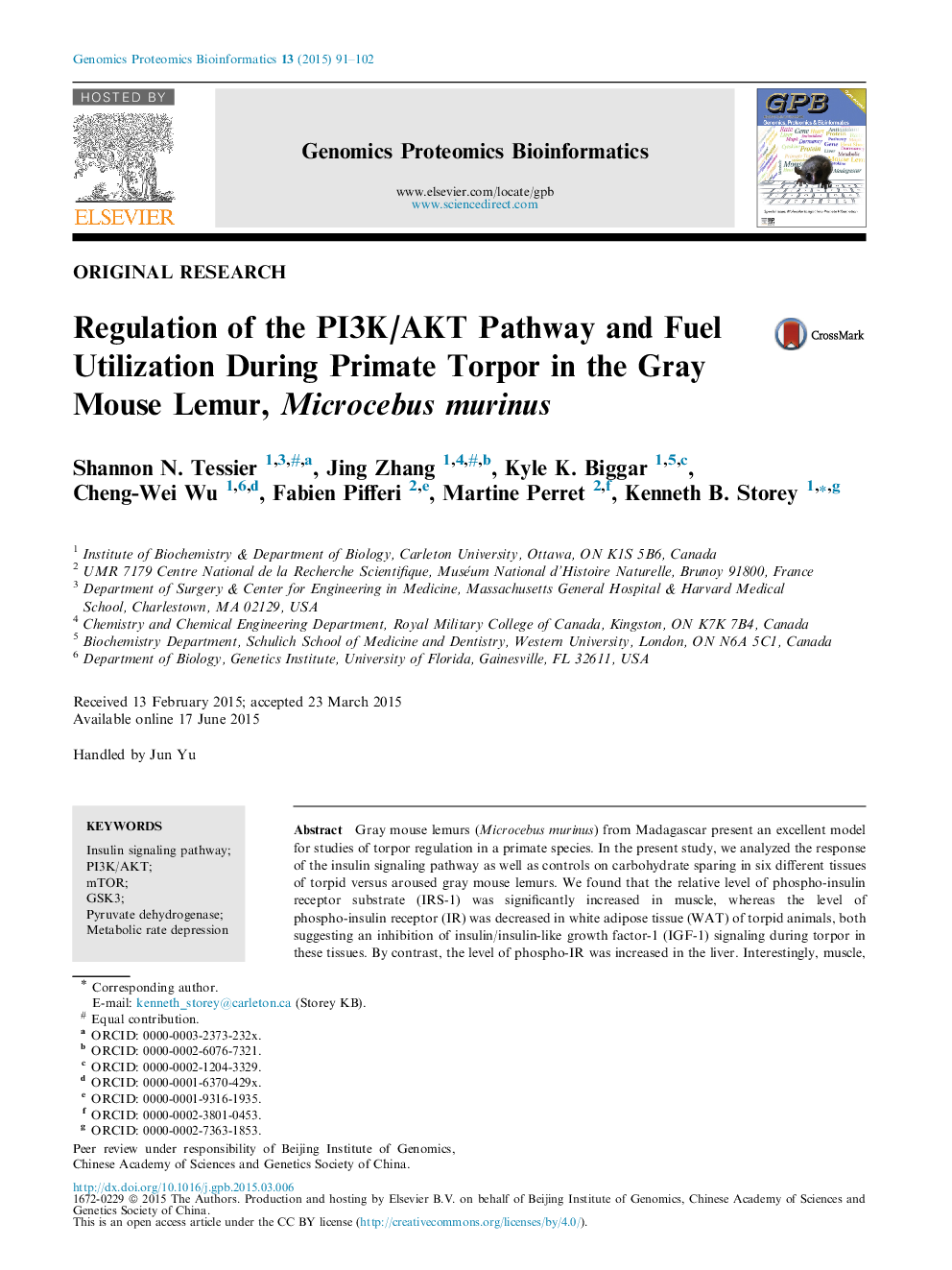| کد مقاله | کد نشریه | سال انتشار | مقاله انگلیسی | نسخه تمام متن |
|---|---|---|---|---|
| 2822470 | 1161288 | 2015 | 12 صفحه PDF | دانلود رایگان |

Gray mouse lemurs (Microcebus murinus) from Madagascar present an excellent model for studies of torpor regulation in a primate species. In the present study, we analyzed the response of the insulin signaling pathway as well as controls on carbohydrate sparing in six different tissues of torpid versus aroused gray mouse lemurs. We found that the relative level of phospho-insulin receptor substrate (IRS-1) was significantly increased in muscle, whereas the level of phospho-insulin receptor (IR) was decreased in white adipose tissue (WAT) of torpid animals, both suggesting an inhibition of insulin/insulin-like growth factor-1 (IGF-1) signaling during torpor in these tissues. By contrast, the level of phospho-IR was increased in the liver. Interestingly, muscle, WAT, and liver occupy central roles in whole body homeostasis and each displays regulatory controls operating at the plasma membrane. Changes in other tissues included an increase in phospho-glycogen synthase kinase 3α (GSK3α) and decrease in phospho-ribosomal protein S6 (RPS6) in the heart, and a decrease in phospho-mammalian target of rapamycin (mTOR) in the kidney. Pyruvate dehydrogenase (PDH) that gates carbohydrate entry into mitochondria is inhibited via phosphorylation by pyruvate dehydrogenase kinase (e.g., PDK4). In the skeletal muscle, the protein expression of PDK4 and phosphorylated PDH at Ser 300 was increased, suggesting inhibition during torpor. In contrast, there were no changes in levels of PDH expression and phosphorylation in other tissues comparing torpid and aroused animals. Information gained from these studies highlight the molecular controls that help to regulate metabolic rate depression and balance energetics during primate torpor.
Journal: Genomics, Proteomics & Bioinformatics - Volume 13, Issue 2, April 2015, Pages 91–102